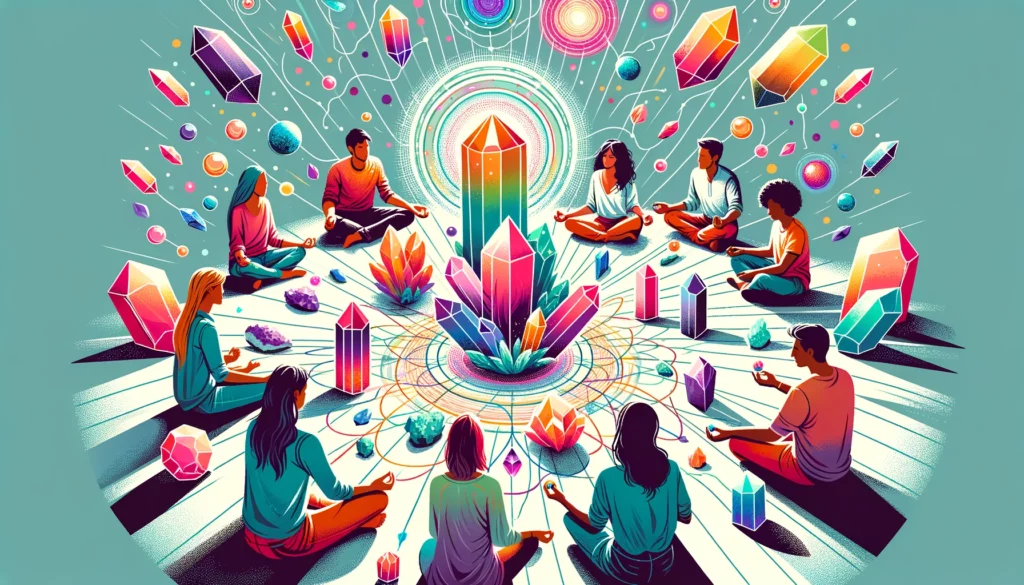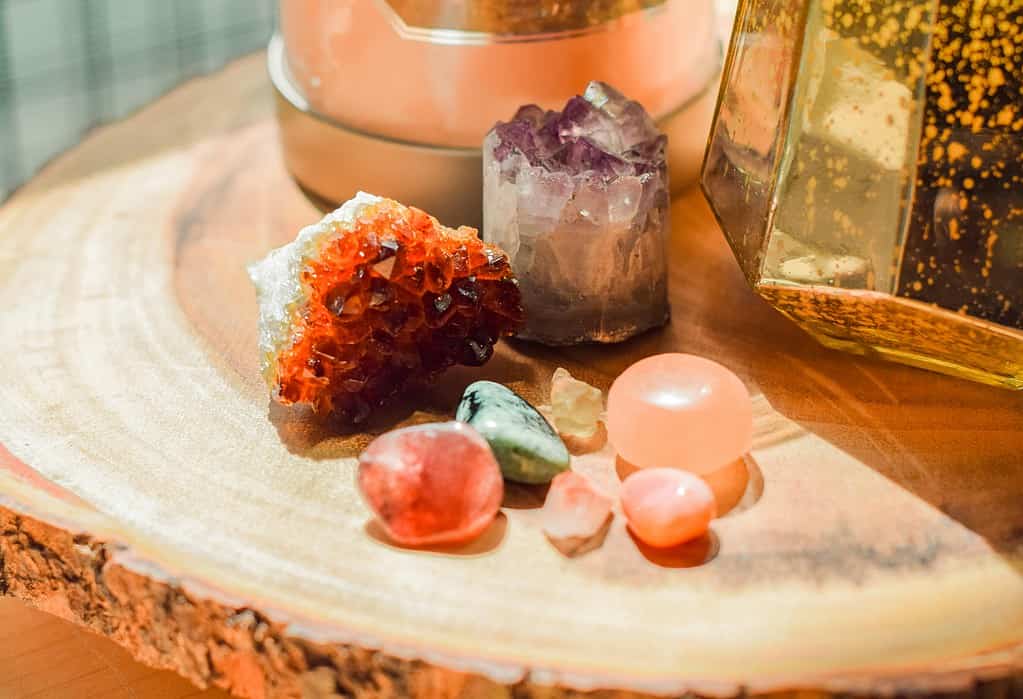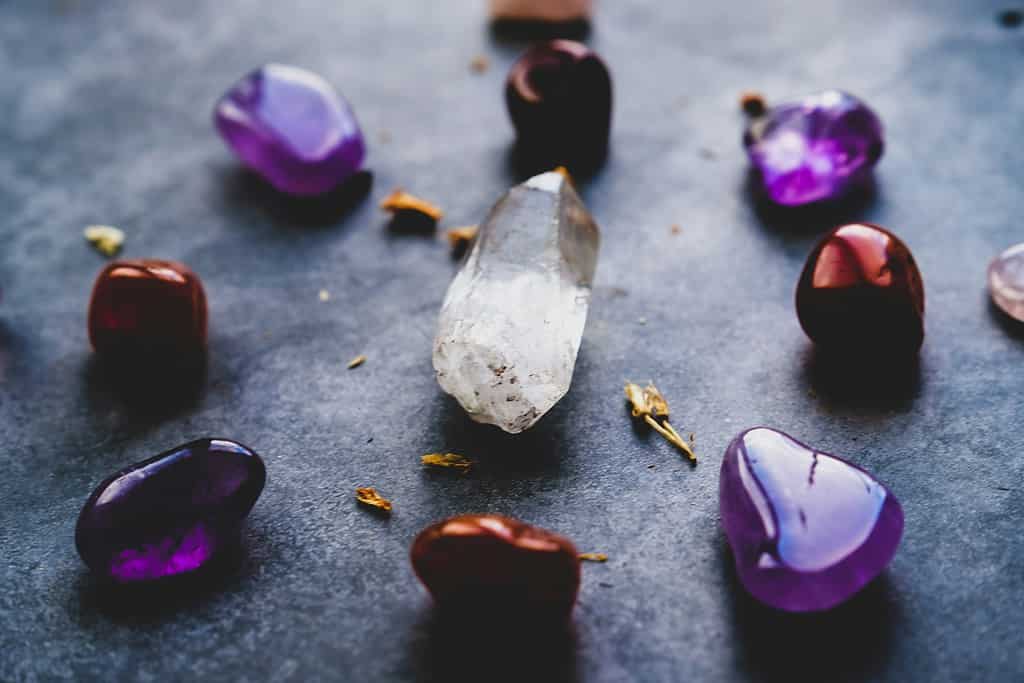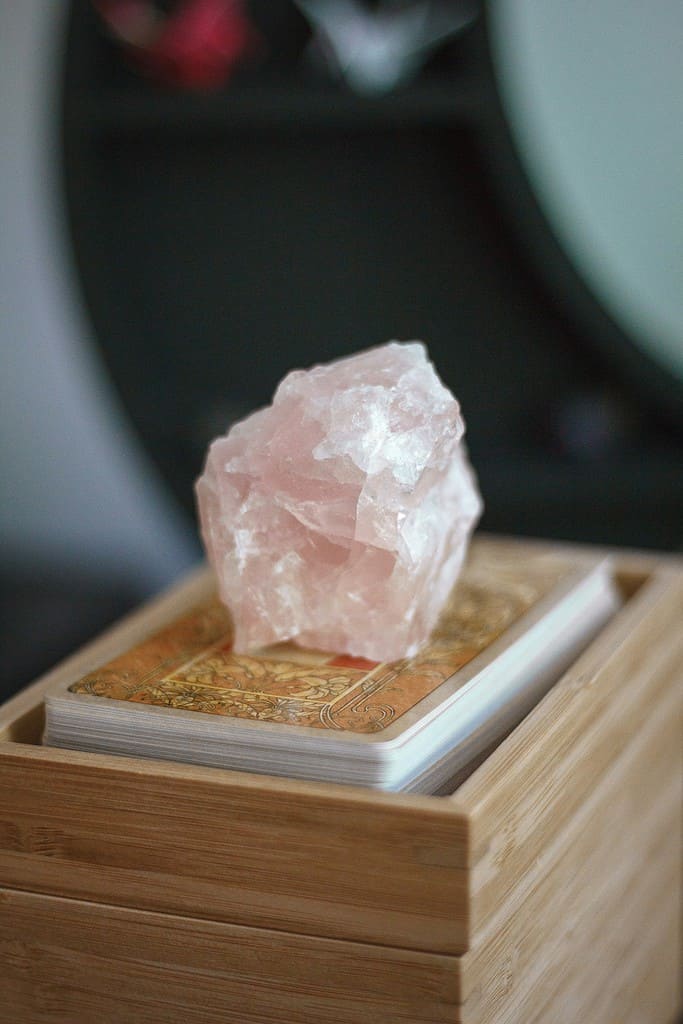
Crystal healing is a practice steeped in history and an increasingly popular one in modern time. This alternative medicine technique, employing minerals such as quartz, agate, amethyst, and opal, claims to offer healing powers.
Despite its widespread popularity and commercial demand, the science has been consistently clear on this: crystal healing is a pseudoscience with no tangible evidence to support its efficacy beyond placebo effects.
In fact, in some instances, this demand for healing crystals fuels substantial environmental damage and exploitative child labor to mine the crystals.
Origins and History of Healing Crystals
The origins of crystal healing trace back to ancient civilizations, including the Sumerians, Egyptians, and Greeks, each attributing unique metaphysical properties to crystals. From Plato’s account of Atlantis to the Ancient Egyptians’ use of crystals for protection and health, these practices were deeply intertwined with the cultural and spiritual life of these societies. Notably, the Ancient Greeks named quartz “krýstallos”, believing it to be deeply frozen water. Amethyst was thought to prevent intoxication.
Furthermore, in Ancient Egypt, crystal amulets had specific shapes, decorations, inscriptions, and sometimes involved specific rituals. They were utilized not only for earthly protection but also to aid in the afterlife, often embodying an Egyptian deity and their unique abilities.
Several other cultures (like the Hopi Native Americans of Arizona) also use crystals (specifically, quartz crystals) not for “healing”, but for diagnosis. These beliefs propagated and remained popular up until Medieval times, at least in Europe.
All in all, several cultures had a traditional belief in healing crystals. But there was never any plausible mechanism proposed for it.

New Age crystals
Modern crystal healing is typically associated with the New Age movement. It posits that crystals can influence the body’s energy fields, chakras, and overall well-being.
Practitioners typically associate crystals with energy or vibration. However, a crystal is essentially a solid material whose constituents, such as atoms, molecules, or ions, are arranged in a highly ordered, repeating pattern. This orderly arrangement grants crystals their unique and often beautiful geometric shapes.
At the atomic level, nature favors arrangements that minimize the system’s overall energy. When constituents come together to form a solid, they seek positions that allow for the most stable, energetically favorable configuration. This typically happens when particles are packed in a regular, repeating pattern.
So if anything, crystals are efficient and not “overflowing with energy”.
The Misconception of Energy

The terminology used in crystal healing, such as “energy grids” and “chakra balancing,” borrows from scientific concepts of energy but deviates entirely from their measurable, empirical basis. The esoteric concept of “energy” promoted by crystal healing practitioners bears no resemblance to the scientific understanding of energy.
Practitioners claim these stones can boost energy, prevent negative influences, and facilitate emotional healing by placing them on or around the body to create energy grids. However, scientific investigations have consistently found no evidence supporting the existence of such energy grids or any significant effect of crystal healing beyond placebo.
Scientific Evaluation and Studies
Unsurprisingly, there are not that many studies into the healing powers of crystals. For the same reason why there are not that many studies into flying crystals, or bomb crystals, or crystals that bloom into flowers — because they simply don’t do that.
There’s no real mechanism that would explain something like this, and universities and research institutes don’t fund studies that don’t have a grounded premise. But this is not to say that there are no studies.
In 1999, two researchers investigated the power of crystals compared to a placebo. They asked 80 volunteers to meditate with either a quartz crystal or a “placebo stone” — a rock that looked like quartz, but was not a true crystal. Participants in both groups reported feeling the “crystal effects” regardless of whether they held the real crystal or the placebo.
The researchers presented their results at the British Psychological Society conference, noting that: “There is no evidence that crystal healing works over and above a placebo effect.”
The Placebo Effect and Confirmation bias
Another study suggested that the reported benefits of healing crystals may be owed to confirmation bias.
Confirmation bias is a psychological tendency to interpret, favor, and recall information in a way that confirms one’s preexisting beliefs or hypotheses, while giving far less consideration to alternative possibilities. In the context of healing crystals, this bias can significantly influence individuals’ perceptions of their effectiveness.
People who believe in the healing powers of crystals may attribute any improvement in their physical or emotional well-being to the crystals, overlooking other factors such as natural recovery, placebo effects, or concurrent treatments. This selective acknowledgment reinforces their belief in the crystals’ efficacy, despite a lack of scientific evidence supporting such claims. Consequently, confirmation bias can lead to a cyclical reinforcement of belief in the healing properties of crystals, where anecdotal experiences are prioritized over empirical scrutiny.

Environmental and Ethical Concerns
The booming crystal healing industry also raises significant environmental and ethical concerns. The demand for crystals leads to environmental degradation and exploitative labor practices, including child labor in mines. Countries like Madagascar, a primary source of these crystals, witness unsafe mining conditions with meager compensation for the laborers. People are rarely aware of this dark side of the crystal healing industry’s commercial success.
Here are just some of the environmental and ethical problems associated with the mining of healing crystals.
Environmental Impact
Habitat Destruction: Crystal mining often involves the removal of large amounts of earth and rock, leading to habitat destruction and biodiversity loss. This can have a cascading effect on ecosystems, disrupting wildlife and plant populations.
Water Pollution: The mining process can contaminate local water sources with harmful chemicals and sediments, affecting both aquatic life and human populations who rely on these water sources for drinking and agriculture.
Carbon Footprint: The extraction, processing, and transportation of crystals contribute to carbon emissions, impacting global climate change. The energy-intensive nature of mining operations, often reliant on fossil fuels, exacerbates this issue.
Ethical Concerns
Labor Practices: In some regions, crystal mining is marred by poor labor practices, including unsafe working conditions, unfair wages, and, in extreme cases, child labor. The lack of regulation and oversight in certain countries means these issues can be prevalent and hidden from end consumers.
Economic Exploitation: Local communities, particularly in developing countries, may not receive fair compensation for the natural resources extracted from their land. This economic exploitation is compounded by the global demand for crystals, which often benefits international corporations more than local populations.
Cultural Appropriation: Some argue that the Western commercialization of healing crystals, stripped of their cultural and spiritual significance, constitutes cultural appropriation. This is particularly relevant when crystals are marketed without acknowledgment or respect for the indigenous cultures that have historically attributed healing properties to these stones.
Conclusion
While the allure of crystal healing is undeniably strong, rooted in ancient traditions and the human desire for connection with the natural world, its purported benefits remain firmly in the realm of pseudoscience.
As such, individuals should approach health and wellbeing with a critical eye, seeking evidence-based treatments and being wary of practices that, while enchanting, offer no real healing power. But that doesn’t mean we should ban the sale of crystals or anything like that.
If you’re feeling happier and more content with your crystal, that’s absolutely fine. Just don’t ignore conventional treatments and try to source crystals from traceable sources where the people who extract them are not abused. Ethical crystal mining is a thing, and if you’re into crystals, you should care about it.






